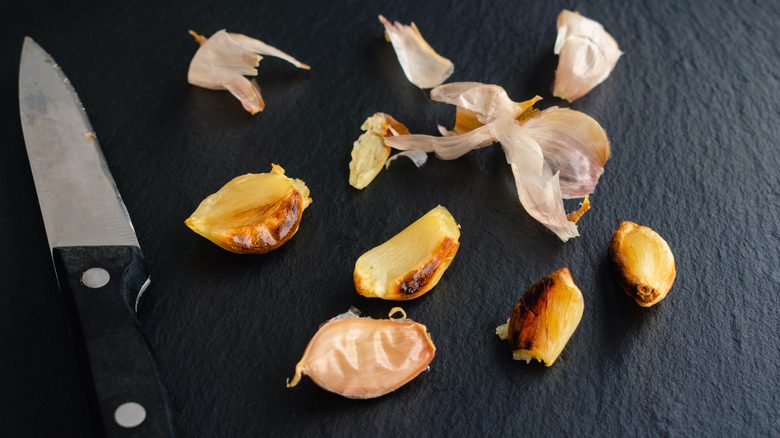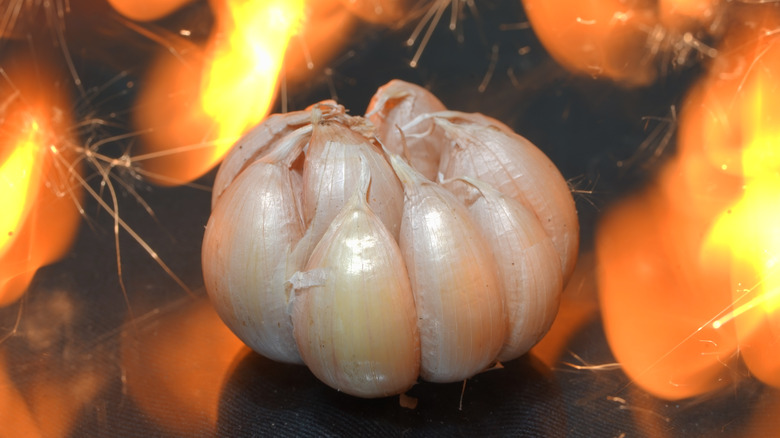Instead Of Simply Roasting Garlic, You Should Char It
There's no escaping the intoxicating smell of garlic encapsulating the kitchen, but then again, who would want to? Garlic can take many forms and its flavor and texture can evolve depending on how it's cooked. From garlic confit to crunchy fried bits, there are endless ways to work it into a dish. Daring chefs turn to an open flame to awaken garlic's complex flavors. Charring cloves directly on the stove produces a unique bite that lends well to fiery, smoky dishes. Slowly roasting a head of garlic results in a fragrant, almost paste-like consistency, whereas charred garlic mirrors that flavor but with a more pronounced texture.
While you'll find charred garlic in a number of dishes and cuisines across the globe, it's a staple in Yucatecan cuisine. Open-fire cooking is an ancient practice, but Mexico has kept the tradition alive, especially in Yucatán, a vibrant city tucked amongst the Mayan ruins. Heavily influenced by Mayan cooking practices, Yucatecan cooking is rooted in slow cooking and utilizing ingredients to their full potential, and that's likely how charred garlic became such a mainstay of the cuisine. But anyone can take a page from the Yucatecan cookbook though and experiment with charred garlic in modern recipes (from any food tradition) to replicate that deep, earthy flavor
Add a smoky twist to your garlic-forward dish
For those known for obliterating their marshmallows over the campfire, then charring garlic is the technique for you. To capture that rich texture and flavor, the garlic cloves must be thrown right in the flame until the exterior is burnt to a crisp. This technique ensures a perfectly scorched bite, balanced with a velvety center. For the modern kitchen, that blackened finish can be replicated with a blow torch or by tossing garlic cloves around a dry skillet. With a little effort, the outer burnt skins should fall off the tender garlic cloves once they're off the heat. The entire head of garlic can be placed on the flame rather than individual cloves, but it may take some extra patience. Placing them on the burner individually, or on a skewer as J. Kenji López-Alt recommends, will speed up the process and produce perfectly charred garlic in just a few minutes.
But the fun doesn't stop there; once you've made charred garlic, have fun experimenting with ways to incorporate it into your food. The unique flavors of charred garlic can transform an array of dishes. A variety of salsas can be elevated with smoky garlic, as can chili pastes like Recado Negro. Introducing garlic directly to a flame not only intensifies the flavor but also yields a unique and delicate sweetness, similar to the rich notes of caramelized onions. The magic of charred ingredients brings out slow-cooked flavors in record time.

